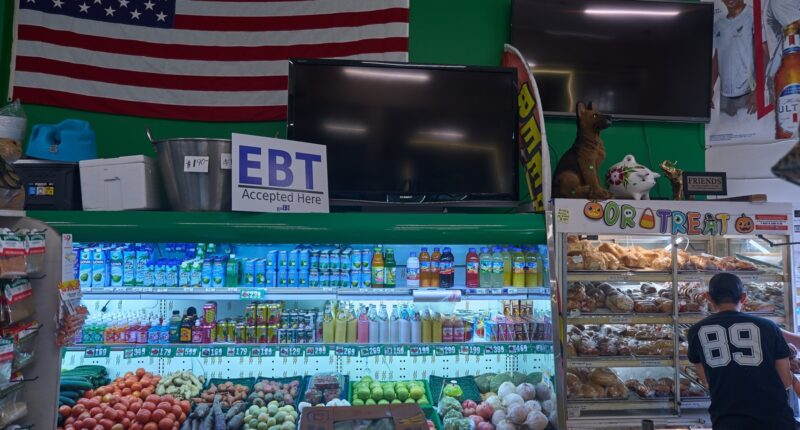Share this @internewscast.com
In San Francisco, as the federal government shutdown drags on, a significant number of Americans are feeling the impact in their daily lives. The Supplemental Nutrition Assistance Program (SNAP), which helps millions of individuals purchase food, has come to a halt.
The cessation of SNAP benefits began on Saturday, November 1, as confirmed by the U.S. Department of Agriculture, the body responsible for overseeing the program. This has left many reliant on these benefits in a precarious situation, unsure of when they will be able to access the funds they depend on for groceries.
The Trump administration has announced plans to partially fund SNAP, following rulings from two judges mandating the continuation of the program. However, the details remain murky regarding the exact amount beneficiaries will receive and the timeline for these funds to be accessible. The process of updating the SNAP debit cards is complex, involving coordination between state and federal agencies as well as vendors, which can take up to two weeks in some areas.
Agriculture Secretary Brooke Rollins highlighted the challenges faced by the department, noting that while there is a contingency fund available, it falls short of covering the $9.2 billion needed to fully fund SNAP benefits.
This disruption in SNAP assistance is projected to affect approximately 42 million Americans, including 16 million children, underscoring the widespread impact of the government shutdown on vulnerable populations across the country.
The pause in SNAP benefits is estimated to impact around 42 million Americans, including 16 million children.
Here are five things for SNAP recipients to know about a pause in benefits.
1. Food assistance may be provided temporarily by your state
Some states are stepping in to help provide food assistance for local SNAP recipients while the federal funding freeze continues.
On the USDA website, you can access a state directory to learn more about temporary assistance and local resources in your state.
2. Leftover money on your EBT card will roll over
Each month, SNAP benefits are loaded onto an Electronic Benefits Transfer or EBT cards. The card functions like a reloadable debit card and can be used to buy food at grocery stores and farmer’s markets, as well as some online retailers.
EBT cards will continue to work in November, even as SNAP benefits are frozen.
That means that even though the normal monthly benefits payment will not appear on the card, SNAP recipients should hold onto their EBT card and may continue to use it if they have remaining money leftover, according to Feeding America, a nonprofit organization.
3. Help is available from food banks, donations
Nonprofit organizations and individuals across the country have stepped up to make sure their fellow community members do not go hungry during the expected pause in SNAP benefits.
Click HERE to find resources ranging from community stocked fridges to food banks and restaurant-backed food rescue sites.
4. There is no set date for when SNAP benefits will return
SNAP benefits are expected to resume after congressional lawmakers pass a bill funding the federal government, which will end the current shutdown.
Currently, Republican and Democratic lawmakers are at a stalemate, having failed to advance any proposed legislation to reopen the government.
The Senate has adjourned until Monday afternoon, which will mark the 34th day of the government shutdown. The House will officially be out of session again this week amid the shutdown, scrapping votes for the sixth week in a row.
In the meantime, Trump’s administration has said it will partially fund SNAP after judges ruled to keep the food aid program running. However, it isn’t clear how much beneficiaries will receive or how quickly they will see the value show up on their debit cards.
5. People may continue to apply for SNAP benefits
Even as SNAP benefits are paused due to the federal government shutdown, people may still apply for the program.
Each state has its own application form, and a directory of contact information for local SNAP offices can be found on the USDA website.
ABC News’ Peter Charalambous and Katherine Faulders contributed to this report.
Copyright © 2025 ABC News Internet Ventures.
















